Images show how HMS Glasgow, the first of eight Type 26 Frigates, looks today as the warship prepares for launch.
It is understood that the vessel will be moved onto a barge soon before being transported to Glen Mallan to be lowered into the water. The vessel will then be brought back upriver to Scotstoun to continue fitting out. Not quite a conventional launch, but a launch nonetheless.
I decided to turn up once again with a drone to document the progress of the ship. Don’t worry, the footage was gathered in accordance with drone legislation, a flight plan was filed, and I’m fully insured and registered to do this kind of thing.
Click the below images to enlarge them.
[su_custom_gallery source=”media: 42574,42575,42576,42577,42578,42579,42580,42582,42583″ limit=”30″ link=”image” target=”blank” width=”400″ height=”200″ title=”never”]
I recorded a video too.
Here are some photos. pic.twitter.com/HGQaMmooi3
— George Allison (@geoallison) November 28, 2022
BAE Systems said:
“Once in position, the float off will involve the base of the barge being slowly submerged over a number of hours until HMS GLASGOW fully enters the water. She will then return to BAE Systems’ Scotstoun shipyard further along the Clyde, where she will undergo the next stages of outfit before test and commissioning.”
I went to gather photos of the first part of the move before having to leave to head elsewhere for personal reasons but don’t worry, I’ll return soon to collect more imagery and video once the ship is fully secured to the barge.
[su_custom_gallery source=”media: 42541,42542,42543,42544,42545″ limit=”30″ link=”image” target=”blank” width=”400″ height=”200″ title=”never”]
Ben Wallace, Secretary of State for Defence, said:
“HMS GLASGOW entering the water for the first time marks a major milestone for the Type 26 programme which supports thousands of highly skilled jobs in Scotland and more across the wider UK supply chain. We’re continuing to invest in the British shipbuilding industry to maintain the Royal Navy’s cutting-edge ability to defend our nation, while strengthening our partnership with allies.”
David Shepherd, Type 26 Programme Director, BAE Systems, said:
“Seeing HMS GLASGOW in the water for the first time will be a proud and exciting moment for the thousands of people involved in this great endeavour. She will soon transfer to our Scotstoun yard in Glasgow where we look forward to installing her complex systems and bringing her to life.”
For those wondering how they moved the ship, little wheeled vehicles under the vessel shown below.
The submersible barge was tested last month ahead of the upcoming launch of the new warship.
According to Malin Group, the barge will initially be used to transport and ‘launch’ the Type 26 Frigates being built by BAE Systems for the Royal Navy and then berthed on the Clyde and made available to industry as required, “catalysing further opportunities for the wider supply chain in fields including shipbuilding, civil construction and renewable energy”.
I went along to watch the barge arrive. Here’s the video.
The 137m long 'CD01', a semi-submersible barge operated by Malin Augustea, has arrived at the BAE shipyard in Govan. Type 26 Frigate HMS Glasgow will later be moved onto the barge which will then move to deep water before submerging and allowing HMs Glasgow to float off. pic.twitter.com/aZ5ALff8OJ
— George Allison (@geoallison) September 8, 2022
John MacSween, Managing Director of the Malin Group, said:
“Securing this piece of equipment marks another positive step forward in the reawakening of the shipping and large-scale marine manufacturing industry in Scotland. This versatile asset, based on the West Coast of Scotland, can be used for launching and bringing ships ashore, docking vessels locally or at remote locations as well as being used to relocate large structures around the UK and further afield.
We are delighted to continue our long-standing relationship with the internationally renowned tug and barge owner specialists Augustea, as well as work with Hat-San who are bringing years of shipbuilding experience to the conversion. We are also extremely grateful for the support we have had from Scottish Enterprise in making this project a reality.”
The barge is a joint venture between the Malin Abram and Augustea and, now modified, represents one of the largest in Europe – it can submerge to load vessels and cargo with draughts of up to 12m and over 137m in length.
It will be based on the Clyde between projects.


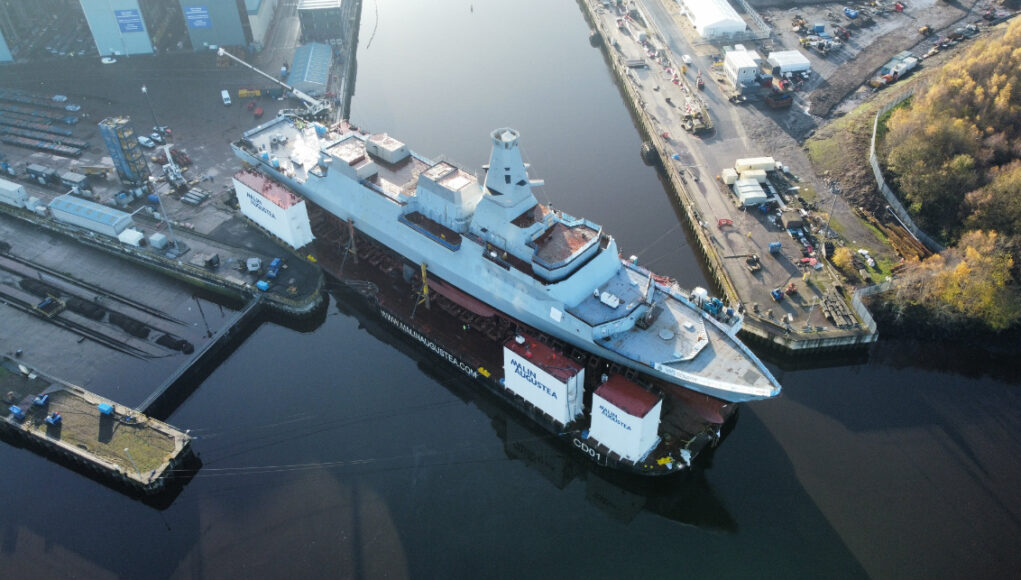

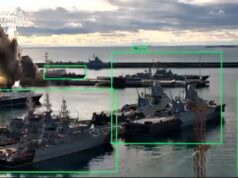
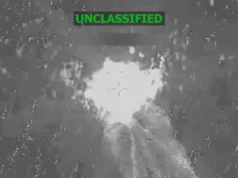

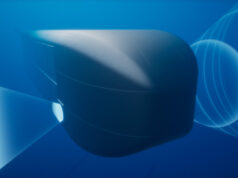
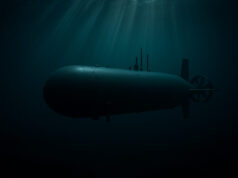






The whole process of getting the ship into the water appears most laborious, am I correct in thinking that the area to the right of the sheds is going to be converted into some form of covered dry dock, which no doubt will make the entire process a little smoother.
Covered, yes. Dry dock, I don’t believe so. I think it’s to be a build hall, so there’ll still be a moving out on wheels, but at least in a straight line.
I’m not sure it’s through planning permission yet, so the plans may still be up for possible alteration.
I can’t see the planning being a real issue as there is nothing there, other than the basin that BAE are not interested in anymore.
If it came down to it, the fitout could be done in the build hall.
It’s worth noting the Burkes are launched in the same way.
https://youtu.be/97hGv9gBeaw
ta
As are the Canadian AOPVs.
https://www.youtube.com/watch?v=9jP5f7z-SMA
Would like to see 1-2 of these AOPVs in the RN for far North duties and Falklands, Georgia and Antarctica. And with a slightly heavier armament.
Slightly!
I hadn’t appreciated how large these vessels are. Great write up about the class’s weapons fit and capabilities.
https://www.navylookout.com/a-guide-to-the-type-26-frigate/
I particularly liked the info about the mission bay and the automated air weapons storage and handling system- similar to the QE class automated weapons system. Cutting edge/ revolutionary thinking from the RN and contributing to reduced through life costs/ personnel costs.
Impressive ships- clearly a big step-up from the type 23s.
Just wish we could afford more than 8 of them- a return to 13 would make me deliriously happy.
More T26 is unlikely but hopefully we can look forward to T32 x 5 off.
I think the T32s will be canned now. Tories might let the program limp on as its not costing a lot atm. Then let Labour axe it as unaffordable, the inevitable blame game will follow but doesn’t looks good for T32.
Wouldn’t be surprised. If money is short and if containerisation/modularity is the future then invest in the batch 2 Rivers and better flat tops.
How happy would just one extra make you? With the rule of three I wish they’d order RN ships in 6s and 9s.
I’m hoping for 9 Type 83s when the time comes.
Cor blimey! 🇬🇧 Rules! Can you imagine!? T83 is still a long way away. Just hope they will maximise the T45 upgrades including doubling the CAMM load to 48, plus the 48 Asters gives a very decent aircover.
Need to learn from type 45 programme and spread the cost over as many hulls as possible. I’d go for at least 12 type 83s as a starting point and no doubt the treasury will downgrade the order to 9 or 10 but lets at least start aiming for a sensible number.
I must say the bow on shot really gives the impression as to the size of her.
Can’t wait to see Glasgow floating in the river pardon the expression. And I was amused by the description of those ‘little wheeled vehicles’ for they really are not little at all and are controlled remotely by a guy carrying a control sticked box. Very impressive in their own right when not supporting a damn big ship.
She looks like a class lady. Cant wait to see more of her kind.
Impressive photographic and video coverage of event, thanks! One presumes that MoD/BAE would mount a similar effort?
I do find it odd that BAE are being quite so lame about things like this.
This still has further export potential and maybe bragging rights for the most internationally adopted *modern* frigate type?
Maybe they will pay George for the footage?
There might be another reason that BAE would prefer the bragging rights / to be remembered for the ‘build in a shed and launch straight approach’ rather than the ‘build on slip and jiggle about on wheels approach’?
Fair point; did not consider selected competing shipyards possibly attempting to damn BAE manufacturing effort w/ faint praise–bloody Frogs. 🤔😳😉
Thats some impressive cost savings:
https://www.shephardmedia.com/news/air-warfare/royal-air-force-typhoon-fighter-jets-to-receive-new-electric-ground-power-units/
hopefully they keep some diesel ones for deployment to austere areas. would be embarassing if they couldn’t recharge them when deployed in the event …
Great footage George 👍
Great work George 👏👏
I am not a sailor and wouldn’t claim to know anything about ship design. Looking at the ships bow (the front of the ship), at the bottom near to the keel, the big nose thingy seems to be missing? I aplogise for not knowing its correct name, perhaps someone who knows about ship design could explain.
Didn’t expect to read that the ship is being welded to the barge. How’s it going to float off then. Gotta be an easier method.
Guessing that’s just for the transportation so it doesn’t fall off… it will probably be unwelded before launch.
Standard method for a large hull when you want to make absolutely sure it doesn’t move.
Thanks for these splendid photos, George. Just a thing, this might be a header or intro from a previous article, but it says at the top that the contract for Batch 2 will be negotiated in the coming months. I believe it has been recently awarded?
Its above my pay grade, but I think the Treasury have put the money aside so that the MOD can go ahead and negotiate the contract.
Excellent photos, cracking weather. Amazing what you are permitted to take pictures of with your drone, doubt it would be permitted in many other countries.
Yeah that seems really weird.
Bravo George. Thank you, great shots.
Morning Daniele from a sunny Durban at a pleasant 23 degrees mid-day! Type 26 taking shape!
Morning geoff, from a foggy, drizzly 10 am Surrey!
Very nice drone vision George. Can I ask a silly question… pause… thanks. Is that the final paint colour or are there later top coats?
Morning Quentin. I imagine she would have been primed and first coated at this stage. Final coats would be left until much later after she has been fitted out and when most of the other trades have competed their work, to avoid having to ‘touch up’ the finished product as far as possible.Some materials are recoatable, others especially certain twin packs are difficult to patch due to inter coat adhesion issues and the other problem is with colour differences from batch to batch especially if the colour has faded or matted off when exposed to the elements. I say all this from experience in a different industry so stand to be corrected
Afternoon (from Sydney) Geoff, thanks for the reply. I thought she does look a bit pale and still has a lot of work to be done on her. Interesting to see how the slots for Mk41s, CAMM and exhaust stacks are not yet cut out at this stage of the build.
Hi Quentin(from a sunny Durban). Indeed so with quite a bit of work from others the paint job is interim. The Type 26’s are going to be wonderful assets for the RN and other Commonwealth navies in the future. Lots of ex Saffers in Sydney-I have many friends from the paddling world there.
Cheers for now.
D63-HMS Verity or born in 63 😂
Damn, cover blown. Lol, born in 63. BTW i like the sound “HMS Verity”. That could be my call sign. Yes, Sydney’s harbour is very good for paddlers and the waterways are getting cleaner. We have had the odd pair of whales up under the bridge and there’s even a seal that’s taken up residence on some steps in front of the Opera House.
I would *guess* this is to do with having a weathertight structure necessitated by the outdoors build.
If it was built in a shed the unnecessary work and wasted materials would be saved.
Thanks SB. I like hearing everyone’s feedback.
This is a real shot in the arm for Scottish shipbuilding and the SNP Government appears to be cool on the subject….very sad. However, well done the build teams.
And you are surprised because?
My concern is that it has been built/assembled in the open – as against undercover – thats in a big shed – not secretly😁.
Lets hope the build quality ( welds etc) stands up……insert superglue here 😱.
Shouldnt be a problem. We’ve been building & welding ships outside since WW2.
Secret stealth; let’s think +ve , superglue is a poor radar reflect 🙂
She looks fabulous. Can’t wait to see her afloat.
Just doesn’t look “frigatey” enough for me, needs a nice rakish bow like the T21 or B2/3 T22. 😉
The T26 are really handsome vessels, way better looking than those T45’s which are neither handsome outside or well planned inside. Bet they work too so us taxpayers will get some good mileage out of them.
Could we fit all the air defence sensors that the type 45 replacement will need to the type 26?
I think that type 26 with sensors and command alongside and a fleet of drones with the mk41 adaptive deck launcher would be incredibly capable. We could have the 100ish cells that we need spead across 5 to 10 drones.
Excellent coverage , however whilst our “Russian friends” may well be in possession of classified documents through their extensive network of “Spy’s” I personally think and as a former member of HM (Her Majesty’s) Armed Forces , I believe that once again we have merely added to that intelligence as what these excellent ships look like in high resolution detail above and below,and in doing that have only achieved,as they say an”own goal”:As I say mearly an observation but one I believe the Senior Service may come to regret and may I humbly submit whilst wonderful to see these excellent ships about to enter service I hope that Russians do not succeed in their attempt.
Regards
A.Macfarlane
I must say that the Type 26 looks very nice, even beautiful in a martial sense. Looking forward to seeing them at sea.
Can some with the data at hand, remind me how many VLS cells these vessels will have. Also, if they can be replenished with missiles at sea by RFA vessels. and reloaded by the crew. Probably a silly question considering how important these systems are to modern naval vessels.
For the UK version(*) the area forward of the bridge will have 24 x strike length MK41 plus 24 x dedicated cold-launch Sea Ceptor. Added to that there is an additional 24 x Sea Ceptor in a silo further back (a bit aft of amidships) so a total of 24 x MK41 + 48 x Sea Ceptor. I’m not sure what the thinking is regarding AshM, canister launchers or use some MK41 capacity? If using MK41 that might well end up waiting for Spear Capability 5 to deliver something, or perhaps NSM as an interim solution? I really haven’t seen much discussion about that.
(*) The Australian & Canadian vessels are going for all MK41 for the front silo (32 or 36 I think, I forget the exact number) and I don’t think they have any other VLS silos but maybe some canister launchers are confirmed there; I’m not sure on that one.
Hi George,
They will have two 24 cell CAMM VLS one forward of the bridge and one amidships plus one 24 cell MK41 VLS also forward of the bridge.
As for reloading at sea, not really possible. The RN (with the T42 / Sea Dart missile system) and USN have tried to develop systems and techniques to reload at sea and it is just way too danagerous for the crew. The USN are reportedly going to try again but the this time the assumption is that the ships will be in sheltered waters and (I assume) not moving… Trying to handle big heavy missiles on the end of a crane cable with the crane on one moving, rolling ship when you are on another moving rolling ship ain’t for the faint hearted that’s for sure. The basic CAMM (Sea Ceptor) weighs 99kg and the CAMM-ER is 166kg according to wiki, so big lumbs full of stuff that will kill you if it isn’t treated with respect. So if you put a dent in it you ain’t gona want to light the fuse as it were…
Cheers CR
Do we know whether the CAMM silos will be sized for CAMM-ER or only for existing CAMM (Sea Ceptor)? I know that, unless things have changed since I last looked, the UK is not part of the CAMM-ER program that I think is pretty much an all Italian affair(?) but it would be really nice to keep the options open and also, even if the UK did never adopt CAMM-ER, allocating the space & weight limits to be able to accommodate the larger CAMM-ER canister might open up other options not even on the table now if MBDA were to look at cold launch options for other missiles where it might well be necessary to work within the CAMM-ER canister volume and weight limits rather than restrict themselves to the smaller CAMM canister limits in order to get to desired ranges.
Barge leaving Govan at 13:30 today apparently (subject to usual tide etc.) for anybody wanting to watch
Why hasn’t the Bulbous Bow been fitted yet?